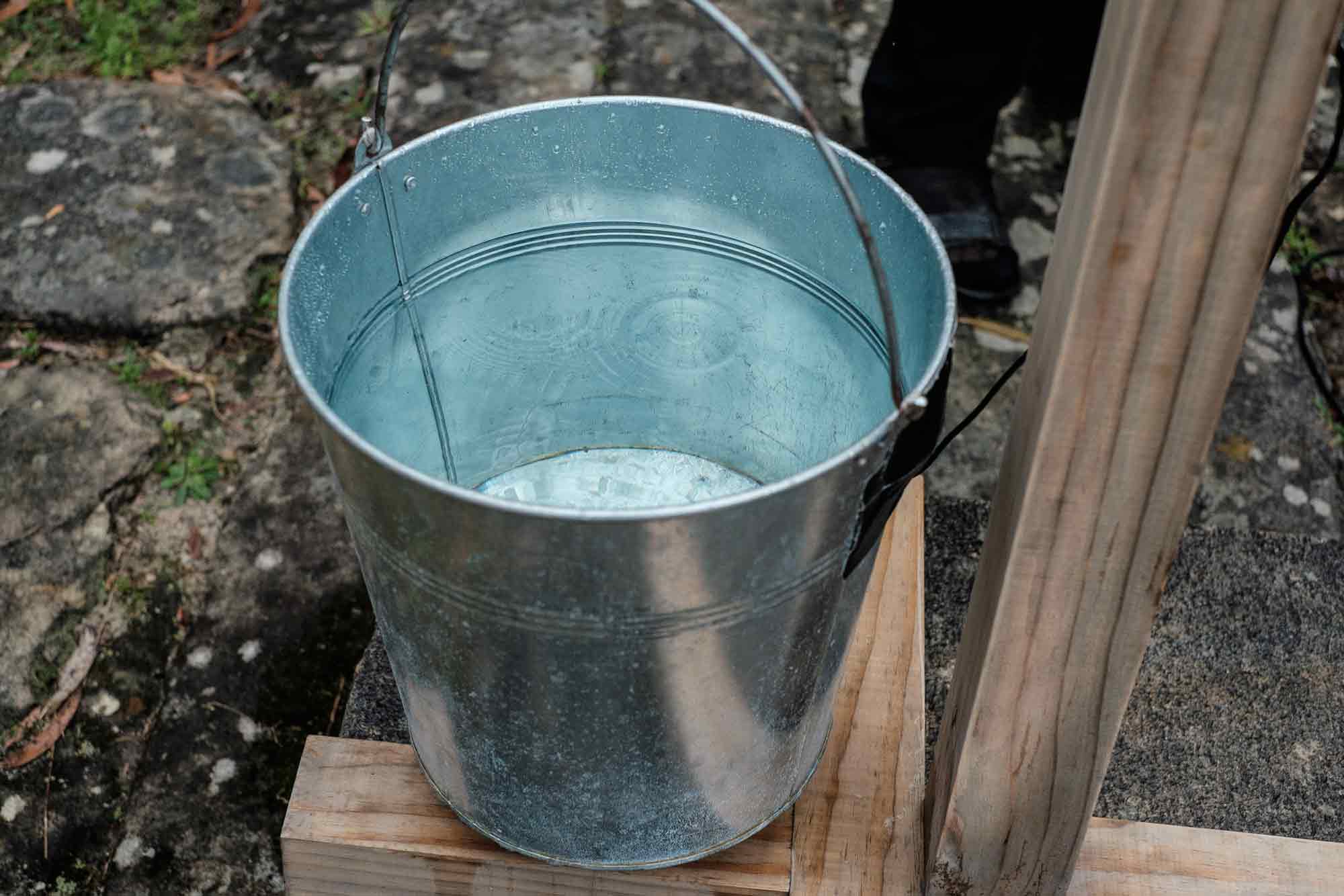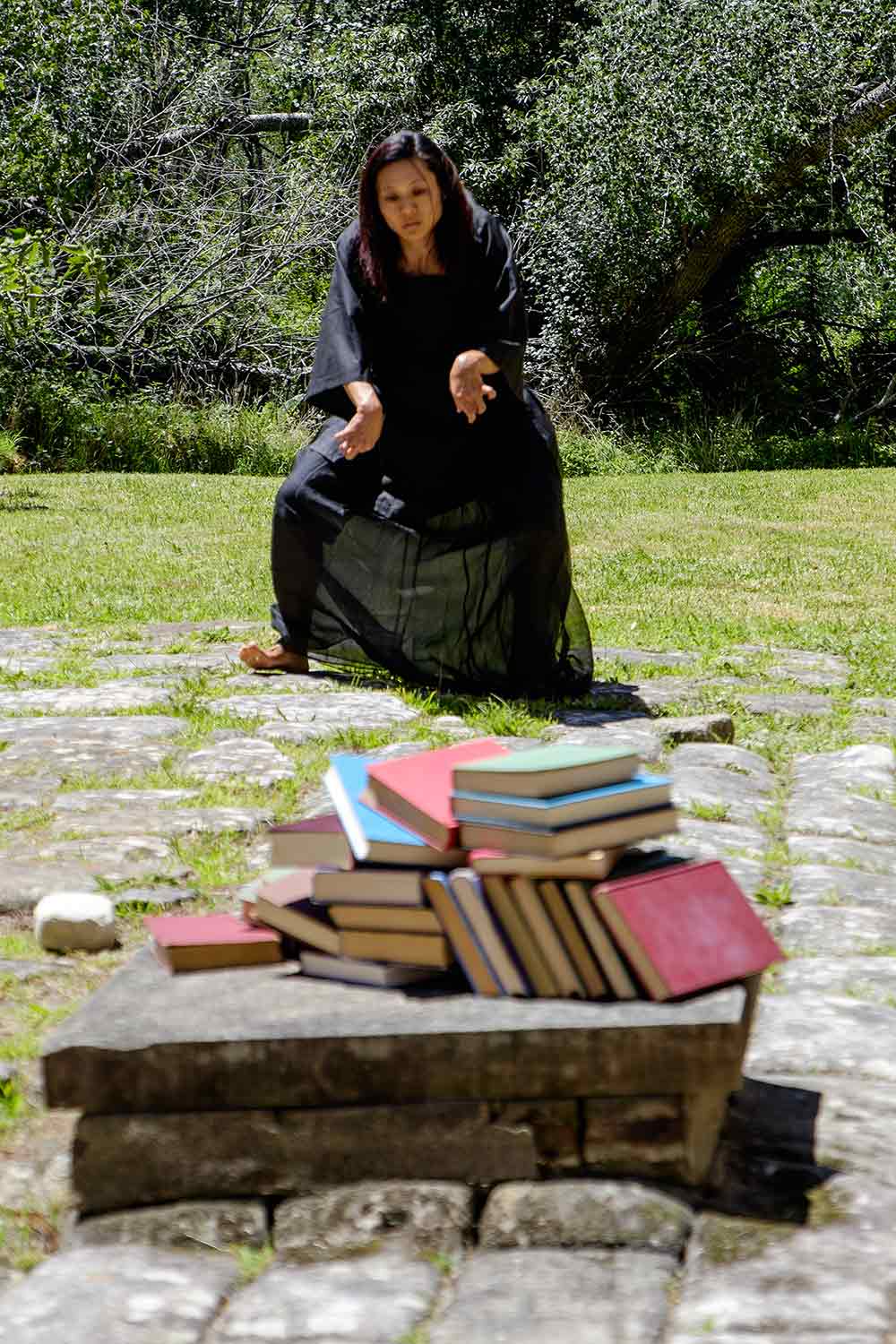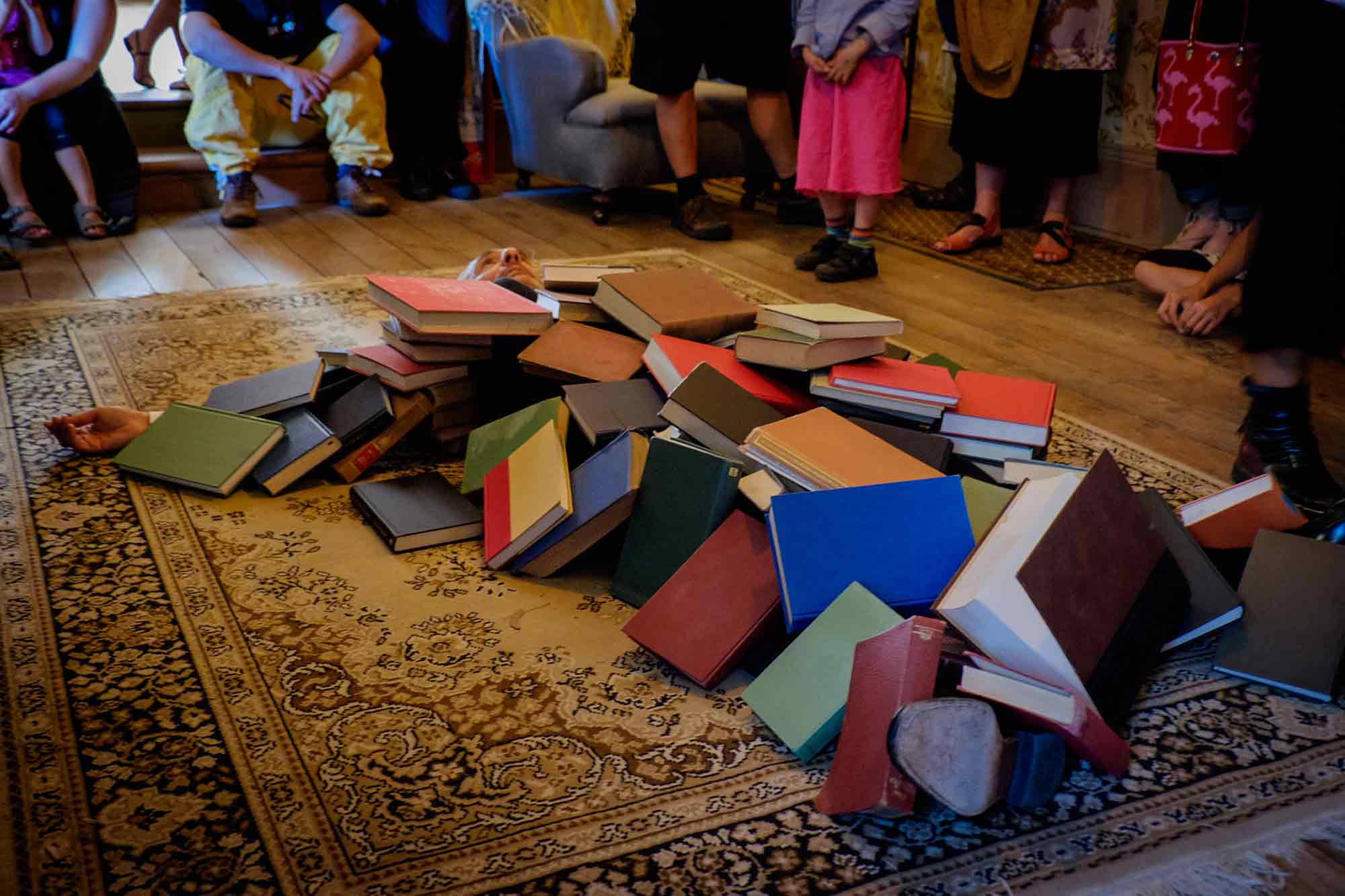- Login
Critical Spatial Practice






About an hour and a half drive west of Sydney, through the urban sprawl, across the Nepean River and into the depths of one of Australia’s most vast national parks, The Blue Mountains, sits the Blue Mountains’ oldest surviving building now known as the Woodford Academy.
Palimpsest Performances, supported by the Blue Mountains City of the Arts Trust Cultural Grants Program 2014, is the first series of contemporary art performances at Woodford Academy, exploring ways of simultaneously drawing forth the past and layering present interpretations of the unique site. Rather than seeing the retelling of historic knowledge of the site as paramount, three sets of contemporary artists will create alternative narrative constructs that sit at the threshold between the real and imaginary, the experiential and ideatic, the human and machinic. Through various communication techniques with and through the site, the performances question notions of belonging, and the complexities arising from the creation of new narrative structures when the recorded historic significance of a site is so vast. The chosen performers all have a sensitivity of working with site and an agility in using various communication devices that at once engage and question the role of the spectator within the site as part of the alternative narrative construct.
Dr Sarah Breen Lovett is Postdoctoral Research Fellow and Manager of the Future Building Initiative at Monash University, funded by the Faculties of Art, Design and Architecture and Engineering. With a prominent art practice and curatorial career, she has been exhibited in many international and national exhibitions and festivals. Notably her curatorial project, Expanded Architecture was held at CarriageWorks Sydney, The Rocks Pop up, Harry Seidler’s Sydney CBD buildings, with symposium at the Museum of Sydney. Sarah was also co-curator on the Cinecity Architectural Film competitions, it rose to international attention with judges such as Bernard Tschumi, Zaha Hadid, Jane Rendell and Juhani Pallasmaa. Writing on substantial curatorial projects has been published, including Expanded Architecture as in Bauhaus Edition 47.
This project explores Rendell’s ideas of critical spatial practice, where various historic layers are re-interpreted through ritual, and myth making. It reflects upon Hill’s ideas of immaterial architectures, where sounds from the site, voice and instrumentation create acoustic layerings that alter experience of site.i It examines Böhme’s notions of atmospheres, how the experience of site is not just informed by the architecture, or the known history, but also by what each of the practitioners and audience members brings to the project. Where they have been and what they have done is seen as contributory in the process of meaning making, and experience of site.
i Jonathan Hill, Immaterial Architecture, (London; New York: Routledge, 2006).
ii Jane Rendell, ‘Site-Writing: Critical Spatial Practice,’ in Expanded Spatial Practices: A symposium exploring the conditions and possibilities for cross-disciplinary approaches to spatial practice ed. Linda Walker and John Barbour (South Australia: UniSA, 2009).
iii Gernot Böhme, ‘Fundamental Concept of a New Aesthetics,’ Thesis Eleven 36, no. 1 (1993).
Siegfried Ebeling, ‘Space as Membrane’, (London: The Architectural Association, 1926/2010)
Frederick Kiesler, ‘On Correalism and Biotechnique’, (1939)
Laszlo MoholyNagy, ‘The New Vision, from Material to Architecture’, (New York, 1932)



































































